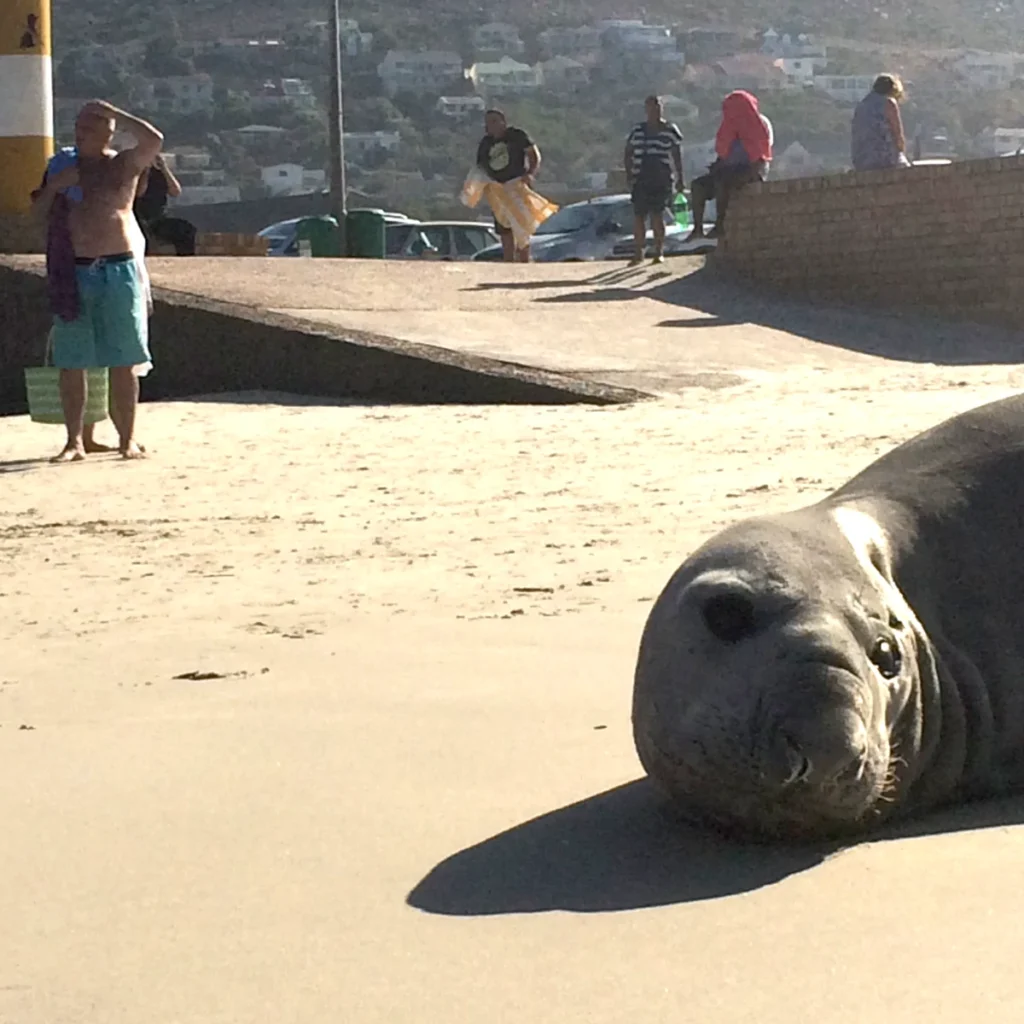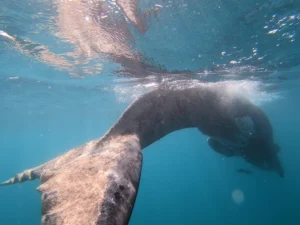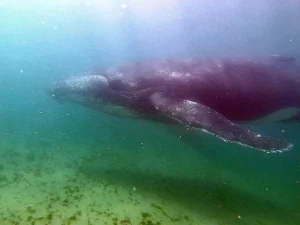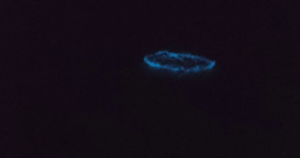Elephant seals are iconic marine mammals, distinguishable by their gargantuan size and trunklike elongated nose, known as a proboscis. They form part of the order Pinnipedia, and are classified as phocids, or true seals, due to their lack of external ears and reduced limbs.
Elephant seals are said to have evolved in the Pacific Ocean 5 – 2 million years ago, during the Pliocene Epoch. They subsequently formed two distinct species, the northern elephant seal (Mirounga angustirostris), which is found along the Pacific coastline of North and central America; and the larger of the two species, the southern elephant seal (Mirounga leonina), which is found on the coastlines of South Africa, New Zealand and South America, as well as the southern hemisphere islands. Although they spend the majority of their time at sea, elephant seals come ashore in these locations each year to breed and moult.
An evident size difference occurs between elephant seals due to sexual dimorphism, with bulls being significantly larger than cows. They can reach lengths of up to 8 metres and weigh approximately 4000 kilograms. Cows are comparatively smaller, measuring around 4 metres in length and weighing up to 900 kilograms. Furthermore, the bull’s proboscis is significantly larger than the cow’s, which contributes to noise reverberation during mating displays.
Elephant seals exhibit a polygynous mating system, where a dominant male (alpha bull) mates with multiple females (cows) in a breeding harem. Breeding occurs during the austral winter, during which males establish territories on the beaches to attract females. In addition to coming ashore during the mating season, elephant seals also ‘haul out’ on land for their annual moult. By shedding the outer layer of hair and skin, they regenerate the blood vessels and skin tissue to ensure optimal thermoregulation. This moulting period typically lasts around a month, during which they abstain from food consumption.
With the exception of mating and moulting, elephant seals spend the majority of their time at sea. These seals have a large blood volume and a greater proportion of oxygen-carrying red blood cells, enabling them to store ample oxygen for diving. With a breath hold exceeding 100 minutes, elephant seals are considered the most efficient freedivers of any non-cetacean (whale and dolphin) mammal species. While they are capable of extreme depths, with recorded dives exceeding 2,000 metres, they typically dive to 500m for 30 – 60 minutes. They rely on these exceptional abilities to forage in deep-sea environments, where they primarily feed on fish, squid, skates and rays, and octopus.
To optimise their reproductive success, cows and bulls employ distinct feeding strategies. Bulls predominantly forage in benthic areas where food sources are more abundant, but the predation risk is increased. In contrast, cows tend to feed in pelagic regions where prey may be scarcer, but predation risks are lower. Cows, being smaller in size, require less food to meet their energy needs. Additionally, maximising the number of breeding seasons is crucial for female reproductive success. Consequently, they prioritise minimising risks and ensuring longevity for multiple breeding opportunities. Conversely, bulls can afford to adopt a riskier strategy as their larger size allows them to tolerate higher predation risks. They strive to accumulate substantial mass to enhance their chances of a highly successful breeding season.

Buffel, the revered elephant seal, has been gracing the shores around Cape Town for several years, earning himself the status of a local legend. Ever since his initial sighting, Buffel has made a regular pilgrimage to various coastal spots, including Duiker Island off Hout Bay, Fish Hoek beach, and, most notably, Diaz Beach within the Cape Point Nature Reserve. In the month of March, like clockwork, Buffel returns ashore each year to undergo his annual moulting process, a fascinating spectacle that captivates the hearts of locals and visitors alike.



